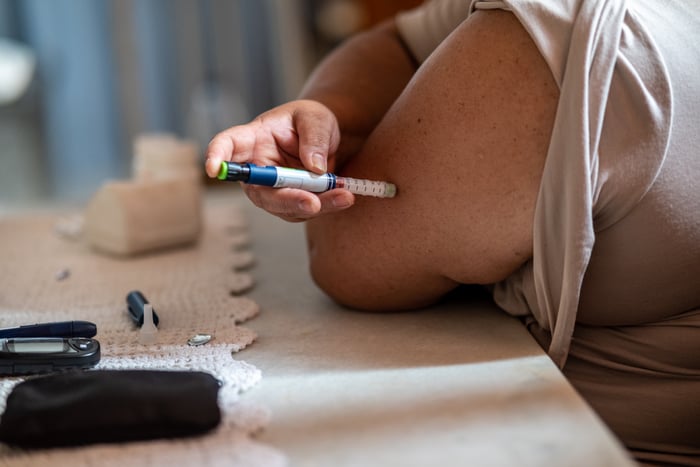‘It: Welcome to Derry’ review: Pennywise fans will be satisfied
It’s dead certain that if you’ve been a television critic for, ahem, a number of years, you’re going to have reviewed a passel of shows based on the writing of Stephen King, America’s most adapted, if not necessarily most adaptable author. (It’s been a mere three months since the last, “The Institute,” on MGM+.) The latest float in this long parade premieres Sunday on HBO — it’s “It: Welcome to Derry,” a prequel to the 2017 film, “It” (and its 2019 follow-up, “It: Chapter Two”) based on King’s 1986 creepy clown novel, each of which made a packet. (There was a 1990 TV miniseries version as well.)
Developed by Andy Muschietti (director of the films), Barbara Muschietti and Jason Fuchs, “Derry” is an extension of the brand rather than an adaptation, which features a white-faced circus-style clown called Pennywise (Bill Skarsgård, back from the movies) who lives in the sewer and comes around every 27 years to feed on children’s fear — fear being the preferred dish of many famous monsters of filmland, and white-faced circus clowns having lost all goodwill in the culture. (No thanks to King. Or Krusty.) And while I assume some of the series’ points may be found within King’s original 1,138-page novel, life is short and that is going to have to remain an assumption. In any case, it’s very much a work of television — not what I’d call prestige television, despite a modicum of well-done fright effects — just ordinary, workman-like TV, with monsters. (Or one monster in many forms.)
It’s 1962 in Derry, Maine, and everywhere else. (Subsequent seasons — prequel prequels — will reportedly be set in 1935 and 1908.) The Cold War is heating up. Schoolchildren, forced to watch animated films about the effects of a nuclear blast, are ducking and covering beneath their desks (a psychological rather than a practical exercise). But the threat of annihilation has done nothing to slow them in their teenage rituals. Bullies chase a target down the street. A group of snobby girls is called the Pattycakes, because they play patty cake, and their leader is named Patty. On the other hand are the kids we care about, the outsiders, banded together in unpopularity. It’s a paradoxical quality of horror films that to be an outsider either qualifies you as a hero or the monster — the insiders are usually just food. Not that the monsters are particular about whom they eat.
We open in a movie theater. Robert Preston is on the screen in “The Music Man,” performing “Ya Got Trouble.” (Chronologically accurate foreshadowing!) In the audience is Matty (Miles Ekhardt), a boy way too old to be sucking on a pacifier. Chased from the theater — he’s been sneaking in — it’s a snowy night, and he accepts a ride from a seemingly normal family, who quickly turn abnormal. Suddenly it’s four months later and Matty is an officially missing child.

Taylour Paige, Blake Cameron James and Jovan Adepo play the Hanlon family, who have just moved to Derry, Maine.
(Brooke Palmer / HBO)
The series begins promisingly, setting up (as in “It,” or, hmmm, “Stranger Things”) a company of junior investigators. Phil (Jack Molloy Legault) has a lot of thoughts about aliens and sex; Teddy (Mikkal Karim Fidler) is studious and serious and has thoughts about Matty. Lilly (Clara Stack) is called “loony” because she spent time in a sanitarium — the King-canonical Juniper Hill Asylum — after her father died in a pickle factory accident. (Not played for laughs, although the pickle is perhaps the funniest of all foods.) Lilly thinks she heard Matty singing “Trouble” through the drain in her bathtub; Ronnie (Amanda Christine), the daughter of the cinema’s projectionist Hank (Stephen Rider), has heard voices in the theater’s pipes. The kids run the film, and supernatural mayhem ensues. It’s pretty crazy! Gross hallucinations — or are they? — will afflict them through the series.
Meanwhile, Air Force Maj. Leroy Hanlon (Jovan Adepo) has been transferred to the local base, where secret doings are afoot, involving (classic plot line) the military’s desire to claim and weaponize whatever barely understood dangerous thing that’s out there in the woods. (His value to this operation is that he cannot feel fear, the result of a brain injury.) The Hanlons — including wife Charlotte (Taylour Paige), a civil rights activist in a Jackie Kennedy pillbox hat, and son Will (Blake Cameron James) — are Black (as are Ronnie and her father, seemingly accounting for 100% of Derry’s in-town African American population). “Don’t be looking for trouble,” Leroy tells Charlotte, who responds, “There’s going to be trouble anywhere we go. That’s the country you swore your life to defend.” Will, who is scientific, will become friends with Rich (Arian S. Cartaya), an appealingly goofy kid in a band uniform; they’ll both wind up on the Pennywise case.
Typically, the kids — also including Marge (Matilda Lawler, the secret weapon of “Station Eleven” and “The Santa Clauses”), Lilly’s socially desperate friend — are the strongest element in the story and the show; their energy overwhelms the obviousness of the narrative, and whatever takes us away from them, into pace-slowing side plots, is time less well spent.
What else? There’s a Native American element — including the old Indian burial ground story — represented by Rose (Kimberly Guerrero), who runs a thrift store (called Second Hand Rose, in a nice nod to Fanny Brice) and whose indomitable air makes her a kind of counterpart and potential ally to Charlotte. Manifest destiny gets a mention, and the plot will conventionally pose Native humbleness against white hubris. Dick Hallorann (Chris Chalk) is a Black serviceman with a tragic mental gift, used cruelly by his superiors — a familiar King type. Racism is a recurring theme without becoming a consistent plot point, with messages for 2025. (Rich: “This is America. You can’t just throw people in jail for nothing.” Will: “Are we talking about the same country?”)
Also: A statue of Paul Bunyan is going up in town — and in fact a 31-foot-tall Bunyan statue was unveiled in Bangor, Maine, in 1959. This is pointed to a couple of times, so I would imagine some kind of Stay-Puft Marshmallow Man scenario coming in the series’ unseen back half. Or something.
Horror, especially body-horror — there are two monstrous birth sequences in the five episodes, out of nine, available to review — has, you may have noticed, moved from the fringes to the center of popular (even high) culture, with A-list stars signing on and Oscar and Emmy nominations not unlikely. Indeed, the good, cheap, unrespectable, unambitious variety of scare flick has mostly disappeared from the big screen. That “Welcome to Derry” is more of a cheesy B-picture than its makers might like to imagine, assembled from worked-over tropes — somewhat excusable for King having originated many of them — is more in its favor than not. TV remains a haven for cheesiness. Long may it remain so.



